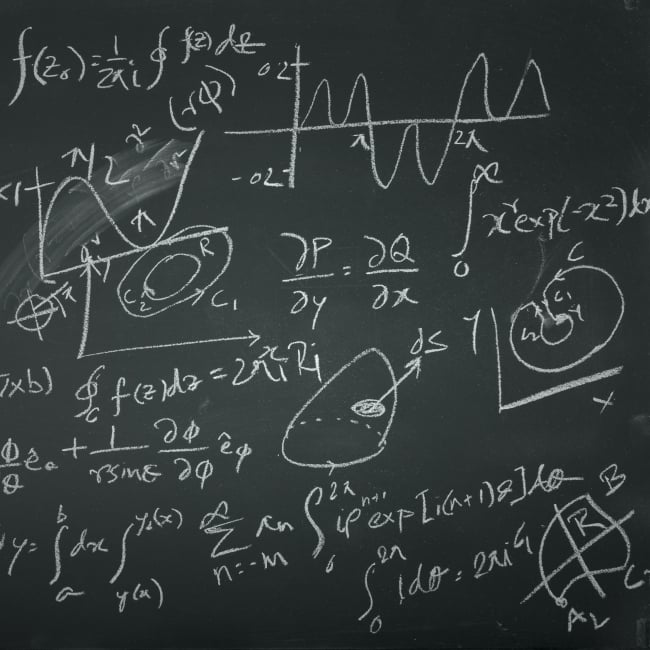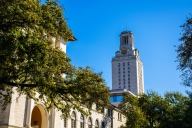You have /5 articles left.
Sign up for a free account or log in.

Getty Images
For about as long as anyone can remember, most undergraduate natural science majors have been required to take at least two semesters of calculus. Lots of students -- especially those in the life sciences -- don’t end up using most of what they’ve learned later on in their studies or their careers, but the requirement has endured. That’s partly due to tradition and a kind of boot-camp mentality among students and faculty members alike: get through calculus, the thinking goes, and then study what you want. And of course many math faculty members believe that the mind-stretching, theoretical nature of calculus should be experienced by any future scientist, regardless of its ultimate relevance.
But lots of faculty members outside math don’t feel that way, and math departments across the country are facing requests from life science colleagues to change the standard curriculum for non-math majors. Concerned scientists say they want their students to be studying more applicable math -- think equations about biological, ecological and evolutionary processes, many of which require computer programs to solve -- earlier in their careers. That's in part to keep the curriculum relevant, and in part to prevent unnecessary attrition among students struggling through calculus. And while some of those conversations have been easy and led to cross-disciplinary innovations, others have been more acrimonious.
A new report on math and college readiness from Policy Analysis for California Education and Learning Works, both California-based education think tanks, briefly mentions two such discussions. One, at the University of California at Berkeley, resulted in the relatively smooth introduction of a new math course for life science majors, according to the report. But at the University of California at Los Angeles, tensions between the math and life sciences faculties over a new math sequence linger.
Professors on both campuses discussed their experiences in interviews with Inside Higher Ed.
“Our principal complaint with the calculus for life sciences is that it is a horrible and hideous instrument of torture to life sciences students taught by mathematicians who want to make third-rate mathematicians out of our students and get angry when they fail,” said Alan Garfinkel, professor of medicine and physiological science at UCLA, who campaigned for and teaches the new math for life sciences course. Still offered to a limited number of students, the sequence combines two quarters of calculus and one each of probability and statistics into three quarters total, with a lab, and focuses more on biology-based problem sets. “I’m a professional mathematical biologist and I don’t use freshman calculus at all.”
While calculus teaches theoretical, rote “pet tricks,” Garfinkel said, “what life sciences students need is multivariable, nonlinear differential equations and models of biological processes.”
Several years ago, the life sciences faculty approached the math department with a “wish list” for a more relevant math for life sciences sequence that incorporated biological examples, Garfinkel said, and the department said “no, no, no, and no.” So the biologists developed their own freshman quantitative requirement, funded in part by a nearly $2.4 million grant from the National Science Foundation (the bulk of the grant is being used to flip introductory biology courses). Instead of theorems and other traditional calculus, the class is focused more on developing mathematical answers to biological questions -- such as what would happen if a given number of, say, tuna, were dropped into a tank with some sharks.
“The shark is going to eat the tuna population, but then the shark population will decline, too,” Garfinkel said. “So we say, ‘We are going to make differential model equations for this process.’ …The students are ecstatic about this class. They love it. They say things like, ‘This class changed how I feel about math.’” The class also involves computer modeling and programming.
The alternative sequence is in its second year, with about 200 students having taken the course; next year, the life sciences faculty hopes to offer it to 300 students. That’s only a fraction of the 3,000 freshmen who intend to major in the life sciences, but Blaire Van Valkenburgh, associate dean of life sciences for academic programs, said she and other faculty members believe the course will help stem documented attrition among women and underrepresented minority students on their way to the major. It's a little too early to say whether or not it's working, but part of the NSF grant is for studying such outcomes.
Van Valkenburgh said that she and her colleagues wanted more math for their students, not less, to better prepare them for the radical shift toward quantitative biology seen in the last few decades due to computer modeling, bioinformatics and other innovations. But they want it to be the right kind of math, she said. For that reason, she rejected the argument that if students can’t get through calculus, they shouldn’t be majoring in science.
“If they’re not getting through the class, you have to ask why,” she said. “There’s the tension between ‘you either have it or you don’t’ in terms of math aptitude, and what the data are showing, which is that that isn’t true…. There some myths that have to be exploded.”
The math department, however, has a different opinion of the course and its origins.
Dimitri Shlyakhtenko, the math chair, said the department didn’t refuse to participate in the creation of a new course, but that it wasn’t willing at that time to develop a new sequence without an appropriate textbook. And while the department isn’t necessarily opposed to the new, experimental course, he said, it has some outstanding concerns -- including how the sequence will prepare life science majors for their other science requirements.
“This is not just about the mathematics department, for instance, there are other departments involved,” he said. “Life sciences students also must take a physics and a chemistry course” for which the new math course might not prepare them. (Van Valkenburgh said she had very limited but promising data suggesting that students who had taken the new course actually outperformed those who hadn’t in physics later on; the physics and astronomy department is conducting its own analysis.)
Shlyakhtenko also expressed concern that the new life sciences sequence had been “compressed” from the traditional four quarters to three. (Life sciences faculty members argue that any discarded calculus topics have been replaced by more relevant math. "This is not watered down," Van Valkenburgh said.) The math chair said he also questioned having the life sciences faculty teaching math.
At the same time, he said, “Life sciences need more math and different math than what is regularly being taught, and we are working jointly with the life sciences to find a better curriculum for them.”
Joseph Rudnick, dean of physical sciences at UCLA, said he deferred largely to the individual departments involved. Over all, he said, “this has not been entirely smooth, but for all parties concerned the top priority is the best possible education for their students.”
He added, “I think that there are differences in philosophy and approach, but they both have merit and I think the math department is committed to making changes to make math more relevant to those students in the biological sciences.”
At the University of California at Berkeley, meanwhile, a similar transition went more easily -- perhaps due in large part to the involvement of Lior Pachter, a computational biologist with joint faculty appointments in math and molecular and cell biology, as well as engineering. Some 300 students are now enrolled in the new sequence, which combines calculus, statistics and combinatorics.
He advised biology and math departments considering change to have faculty members “on the ground, engaged with relative departments. It’s a harder sell when one department approaches another one with a different culture far away.”
Change also can’t be “mandated from above,” he said. “You can’ t really say to a math department, 'You will do this for us.’”
Change is coming, however, he said. Biology isn’t well integrated into most math departments, but the increasingly quantitative nature of biology is undeniable, creating new demands.
Math as a Service
But how many demands are too many? Ronald Graham, the Irwin and Joan Jacobs Professor in the department of computer science and engineering at the University of California at San Diego and past president of the American Mathematical Society, said departments across the country are facing requests from the life sciences and disciplines such as engineering and economics to specialize their offerings.
“Math is basically a service department, where engineering wants this and life sciences want that and they think they know what’s best but they don’t, really,” he said. Like statistics, he said, math runs the risk of getting “splintered” when it is specialized for every field.
Pamela Burdman, an independent educational policy analyst who wrote the report, called “Degrees of Freedom: Diversifying Math Requirements for College Readiness and Graduation,” said she wasn’t “really advocating for or against specific math content.” But, she said, “Certainly I am advocating for greater collaboration between math departments and other disciplines with a goal of making math requirements relevant for students.”
Lee L. Zia, deputy director of the Division of Undergraduate Education at the NSF -- which is helping fund the new UCLA course -- and a former professor of math at the University of New Hampshire, took a somewhat similar view. (He said he'd been in similar cross-disciplinary conversations going back decades, when he was a faculty member.)
“The NSF isn’t a policy-making body, so we have no position on standard calculus in that sense, but I feel very confident in saying that we see more and more that science -- cutting-edge science -- is very interdisciplinary in its nature; the real action is in the boundaries between disciplines,” he said. “So the better equipped students are in all disciplines, including in math, is a very good thing.”
It’s up to individual institutions how to best set up their students for success, he said.
Zia added: “I know enough not to jump into the political battle between departments at institutions, but you know mathematics is the 'M' in STEM [science, technology, engineering and math], and as institutions figure out ways to serve students best, I hope mathematicians will have a seat at the table contributing their ideas.”









